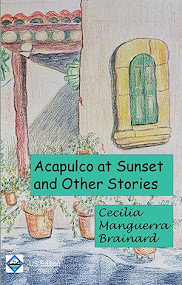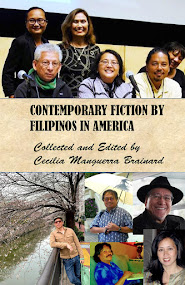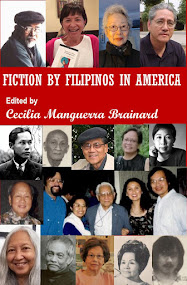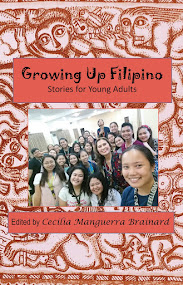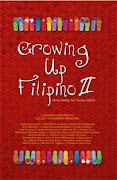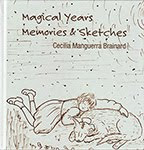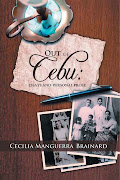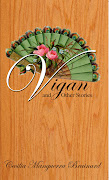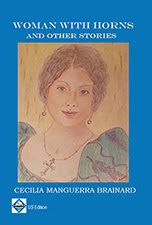This is one of the Visualization exercises I use in my Creative Writing Class. I'll be using this in a workshop this Saturday and thought some readers might be able to use it:
Guided Visualization
The Secret Cave
Begin your visualization with a deep breath, the kind you have learned that is easy and restful. Use the count of five as your rhythm as you inhale…and hold…and exhale again.
Take another deep breath –
Perhaps one more.
Let all of your concentration be on your feet and on any areas of tension in them. Breathe naturally, and as you inhale, imagine you are drawing all the tension from your feet up through your body into your lungs. Hold the mental image of that tension. And now, slowly, imagine that you are exhaling all of that tension out through your mouth. You will feel as if you are literally blowing away the tension, exhaling all the destructive tightness out of your body.
Now I’d like you to imagine that you are walking alone in the woods. The trees are lush and beautiful.
Can you see them? (Or sense their presence)
Imagine the colors…bring them clearly into focus in your mind’s eye;
Listen to the sounds…
Notice the smell of the trees…
How does the air feel against your skin?
There is a narrow stream running nearby. Enjoy the sound of rushing water for a moment. Enjoy its sounds and observes how it breaks against the rocks before you find a safe place to cross to the other side.
Now take a new path, one that leads to the mountain trail.
Follow the trial that leads you higher into the mountains…
And higher…until your legs feel the strain…until you don’t
want to climb anymore.
Stop and look around you. Find the cave that almost hidden by the rocks. Know that you will not be harmed inside the cave and that you will find something of great importance there.
As you walk into the cave, the air feels cool against your skin.
Wait a moment; let your eyes grow accustomed to the dim light.
The walls of the cave are rough and damp.
Reach out and feel the dampness.
Notice the sound of a distant waterfall somewhere deep
within the cave.
There is a soft, golden light coming from a high opening; you can see the next room-like cavern. Walk into the next room and explore the cave.
As you move into a still deeper part of the cave, a fire glows from one side of the cavern and you can see that Someone is seated beside it on a large, flat rock. You have encountered Someone with great wisdom and insight, Someone who can reveal to you the answers to important questions, and whom you have every reason to trust. This person has known you for a very long time.
Ask this very special person any question that is important to you. Remember or note down the question that you asked.
What was the answer you received?
Stay in this cave for a few more moments, relishing the presence of this special person. You may ask Him more questions if you wish. Or just rest with Him.
(Wait a few seconds)
Now it is time to explore even deeper regions of the cave. There is nothing here that will be harmful to you and the discoveries you make will enrich your understanding of yourself.
Follow this special person into the next chamber. There you find a large oval room where the walls are smooth and soft sand lies beneath your feet. A narrow channel of water runs through the room. The water is four-feet deep and, at its widest point, the water spreads to a width of twelve feet.
A boat awaits for you in the water; it is small and securely built. The loving person helps you onto the boat for a journey that will take you to a place of vivid memories. There maybe something you want to say to this person before you leave; if so, take a moment to write it in your notebook.
And what is it that you perhaps felt but did not bring yourself to say?
What does this loving person say to you before you go?
Was there anything that you wished had been said to you that was not said? If so, write or remember what you wanted to hear.
And listen while this loving person says those words to you now.
If you have great difficulty saying goodbye, you can ask this wise and loving person to go with you on your journey.
The boat is powered in a unique way: it moves forward or backward as you direct it with your thoughts. When you are comfortably settled in the boat, direct the boat forward and notice how easily it moves through the water – slowly and safely –The automatic pilot guides your boat through the water while you watch the changing scene around you.
Notice that there are frescoes on the walls of the cave. These paintings are vast mural depicting times in your life when you felt good about yourself and the decisions you were making. They show how capable and talented you really are.
Direct your thoughts to pull the boat close to the edge of the water so you can look more closely at the pictures. Notice how confident and happy you seem in the drawings. Some of the pictures show “small moments,” intimate times with a friend. Other drawings recall more public experiences.
Remember or write in your notebook what you see in the paintings on the wall.
When you are ready, direct the boat forward and drift down the narrow river, watching scenes from earlier years until you find one that particularly appeals to you. Remember or write what you see.
Direct the boat to stop and wait for you while you step onto the shore and walk to the wall of the cave to observe the scene more carefully.
Imagine yourself walking right into that scene, becoming one of the characters, the central character. As you step into the picture, it will carry you backwards into that time and that place, and your memory will recall everything that you want to remember about that time of your life.
Relive all that was good and nourishing about that time and release any disturbing feelings if they should arise. Relive the feelings of success. And now describe in writing what you feel and what you see.
Carry that feeling of success as you step back into the boat. Direct the boat to take you through the cavern, where you see scenery more beautiful than you have ever seen before. Let the river carry you all the way to the place of departure, into the sunlight, to a familiar place where you step onto the shore. If you had invited the Special Person with you on your journey through the cave, you may now say goodbye to Him and thank Him. Know that He is always there for you.
Now, by the power of your thoughts, send yourself back to the here and now.
There is no rush, but when you are ready, I’d like you to write about anything that now comes to you.
~~
Tags: writing, creative writing, visualization, creativity, right brain

















